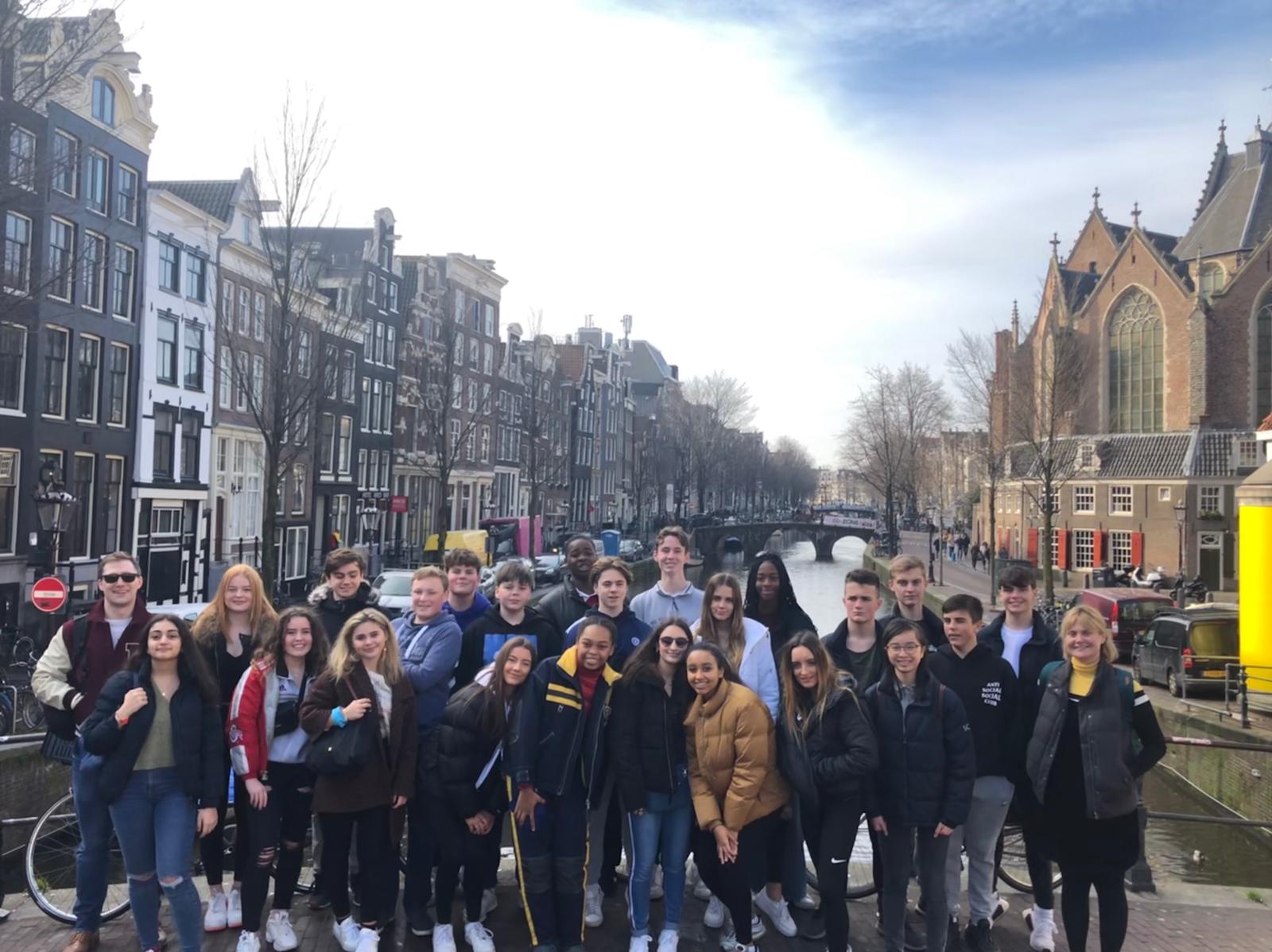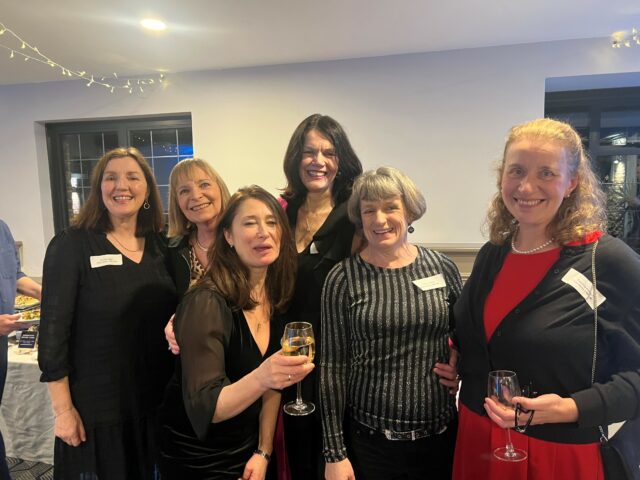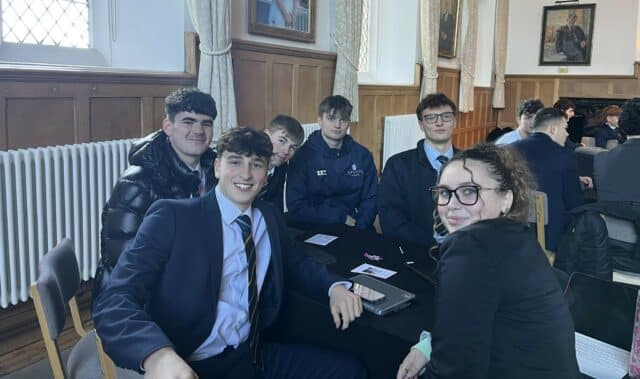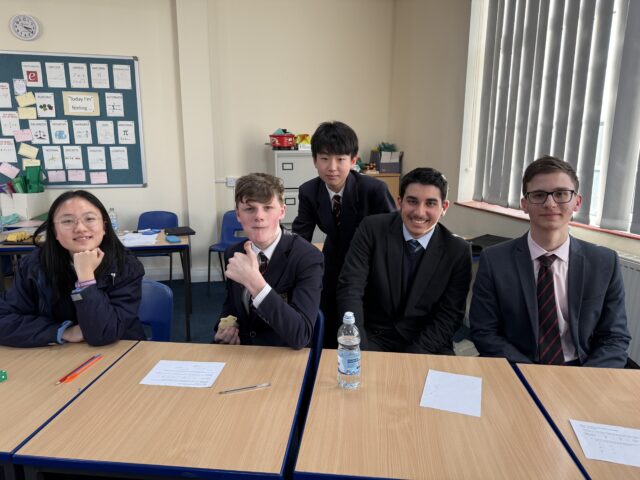Day 1
The Religious Studies Department Upper Fourth and Fifth Form Educational Visit to Amsterdam began at an uncomfortable hour for most of the 23 pupils in attendance: 5:30am. Rhiannon and Dan strolled casually up the Chapel Drive and accompanied the two-minibus convoy on the delightfully traffic-free journey to London Heathrow.
No sooner were we through the doors of Terminal 5 than the flight was delayed, which distressed a few given the early start but did provide the opportunity for a leisurely breakfast. Amsterdam is only a hop, skip and a jump away via aeroplane, and we seemed to spend longer taxiing around London Heathrow and Amsterdam Schiphol than we did in the air. Notwithstanding the delay, by 12:30 we had managed to get to our hotel, MEININGER Amsterdam City West and check-in.
The afternoon was spent conducting a walking tour of Amsterdam. Pupils visited Amsterdam Centraal, the Catholic Church (Basiliek van de Heilige Nicolaas), the Red Light District, Nieumarkt and its anatomical theatre (the first in Europe, where the bodies of executed criminals and the poor were dissected by pathologists for the paying public), the Nationaal Monument, de Dam (the city centre) and the Koninklijk Paleis (the former royal palace), Amsterdam Museum (located in the city’s former orphanage), and Anne Frank Huis (to which we would return the following day).
The walking tour was a great way to become acquainted with the city and visit its major monuments, and even the more indecorous encounters in the Red Light District provided a basis for interesting debate on everything from the legalisation of cannabis and prostitution to the famously progressive Dutch attitudes to euthanasia and religious plurality.
Dinner was taken back at the hotel, and Rhiannon, Dan and I were all shocked to see the pupils going to bed early(!) completely shattered.
Day 2
The second day in Amsterdam was a much more sober affair, which provided pupils with the opportunity to reflect on the horrors of the Holocaust and what they had learned about Judaism in school.
After a hearty Dutch breakfast, we departed for the Camp Vught National Memorial, a museum and permanent monument to German occupation and the terrors of concentration camps. This visit included a guided tour of the place of execution (where political prisoners were put to death by firing squad), barracks, the crematorium, and a memorial to some 1,250 Jewish children who were interred at Camp Vught before being sent east to the death camps of Germany and Poland: tragically, none survived.
Contemplating this last horror was particularly poignant, as the memorial gives the names and ages of the victims: many of the pupils stood in silence reading the names of Dutch children who never lived past their sixteenth birthdays. A number took the opportunity to write their reflections on the memory wall as they exited the National Monument, and Rhiannon, Dan and I were heartened to read such introspective thoughts committed to paper.
After lunch near Westerkerk – one of the largest Protestant churches in Europe and the original resting place of that most enigmatic and evocative of post-Renaissance artists: Rembrandt – we made our way to Anne Frank Huis (Anne Frank’s House).
This was a deeply affecting visit with a captivating introductory lecture about the history of anti-Semitism in Nazi-occupied Europe, biographies of the Frank family and other Jews sheltered with them, and an overview of Otto Frank’s mission to publish the diaries of his daughter and bear witness to the plight of Dutch Jews during the Second World War.
After the conclusion of the talk, which intersected with the history of Epsom College (because Anne Frank eventually died of typhus in Bergen-Belsen, the death camp liberated by Old Epsomian, Brigadier Hugh Llewellyn Glyn Hughes) we all toured the secret annex where the Frank family hid for over two years before their tragic discovery by the SS.
Throughout the entire day, but particularly during this sombre visit, the pupils were extraordinarily well-behaved and thoughtful; we simply could not have asked for better charges, and the various installations in the two museums provided plenty of opportunities for searching and self-examining questions. The day ended with some downtime in central Amsterdam and dinner at the hotel.
Day 3
The third day involved a whistle-stop of important Christian and Jewish sites in Amsterdam. The first waypoint was Ons’ Lieve Heer op Solder (Our Lord in the Attic), a seventeenth-century canal house that was converted into a house church between 1661 and 1663 (when Catholics, and any other non-Protestants, were forced to refrain from public worship). Pupils learned about how the suppression of Catholicism, Lutheranism, and Judaism in public, but their toleration behind closed doors (in private), was essential to the commercial success of Amsterdam and its long-lasting status as a permissive city. Elsewhere in Europe, religion was the cause of violent persecution; however, in Amsterdam, people of different religions lived and worked alongside one another in relative harmony: the city flourished as a result.
In the afternoon, we decamped to the Joods Historisch Museum (the Jewish Historical Museum) in the Jewish Cultural Quarter. Here, pupils extended their knowledge and understanding of Judaism, visiting a converted synagogue and investigating the various artefacts on display. This tour also involved a visit to the Portuguese Synagogue, a late seventeenth-century Sephardic synagogue built by the Portuguese Jews of Amsterdam who had successfully fled their homeland at the end of the fifteenth century, when a royal decree led to the forcible conversion of Jews to Christianity (on pain of death).
The Portuguese Synagogue remains a place of worship; however, it is also a tourist attraction and allowed pupils to see various features of a synagogue in action. The final stop on our itinerary was a visit to the Hollandsche Schouwburg, a former Dutch theatre that was converted into a deportation centre for the Jews during the Nazi occupation of the Netherlands. It is now a permanent memorial to the Holocaust, and contains a wall with the surnames of some 100,000 Jewish deportees from the Netherlands; this was another moving and sombre moment.
The day ended with dinner, and a celebration of Marguax Soin’s sixteenth birthday (one day early, but the large cake that pupils and teachers had smuggled around the city required refrigeration or consumption)! The end of the third day brought the organised portion of the educational visit to an end, and pupils then prepared for a morning departure from the hotel.
Day 4
The final day simply involved making our way back to Epsom College, which was an uneventful affair with a final opportunity for souvenir shopping in Amsterdam Schiphol.
I must emphasise that pupil behaviour was exemplary throughout the educational visit, even when encountering relatively frustrating issues, like the delay at London Heathrow; indeed, it was among the best that I have encountered on any educational visit. Additionally, I am incredibly grateful for the help and support of Rhiannon and Dan, who were absolutely superb throughout: they are both incredibly experienced and were brilliant at dealing with unanticipated events and encouraging pupils to make the most of their time on the visit.
By George Greenbury





